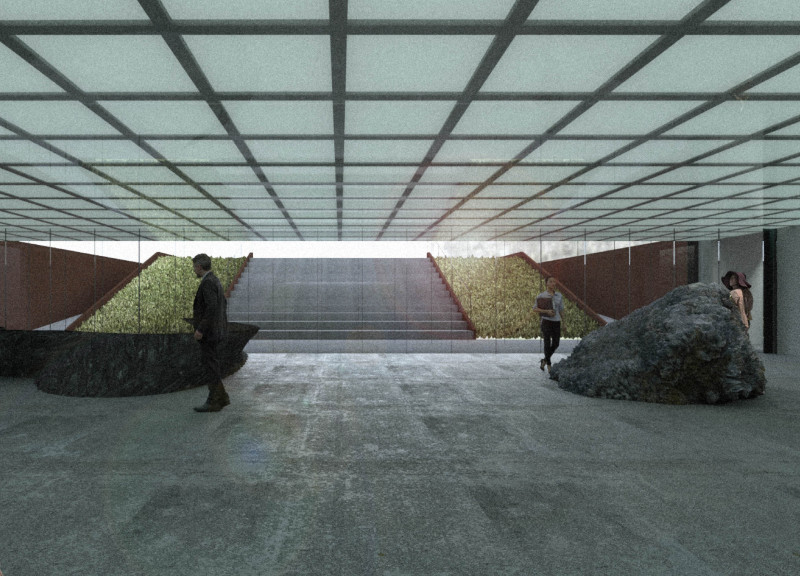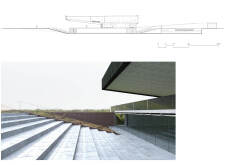5 key facts about this project
The Iceland Volcano Museum is located in the Myvatn region of Iceland, an area known for its remarkable geological features and volcanic activity. The museum aims to enhance visitors' understanding of the region's landscape and its cultural significance. The design focuses on creating a journey that connects the natural environment with the built structure, inviting people to explore and learn about Iceland's geological heritage.
Framing Nature
Upon arrival, visitors walk through a long passage bordered by corten steel walls, which creates a visual frame around the views of the sky and landscape. This entrance serves to link the museum experience with the surrounding nature, encouraging a deeper connection to the volcanic features that shape the region. It sets the tone for the unfolding exploration within the museum.
Spatial Transition
Inside the Information Centre, visitors receive guidance before moving further into the museum. The design encourages visitors to descend into the core spaces, allowing them to experience different layers of the earth made visible. This descent highlights the relationship between human presence and the geological elements of Iceland. It creates a direct engagement with the natural world, fostering appreciation for the local geology.
Exhibition Design
The main exhibition space is designed with simplicity in mind, helping visitors focus on the installations. Stairs on either side allow for a return to ground level, where natural light and greenery become important features once again. This back-and-forth movement between environments reinforces the themes within the exhibits and emphasizes the changing connection to the outside world.
Visitor Interaction
The gift shop and library area incorporates elements inspired by the Mid-Atlantic Ridge, enhancing the visitor experience. Here, the geothermal activity of the region is made tangible through features that create a light mist, which adds a sensory aspect to the environment. This area encourages interaction with both artifacts and the natural phenomena that define the region, enriching the overall visit.
Corten steel is used in key structural elements, particularly at the entrance. This material not only serves its practical purposes but also interacts with environmental influences, developing a patina that connects with the landscape. This detail reinforces the conversation between the architecture and the unique geology of Iceland, solidifying the museum's place within its natural setting.





















































